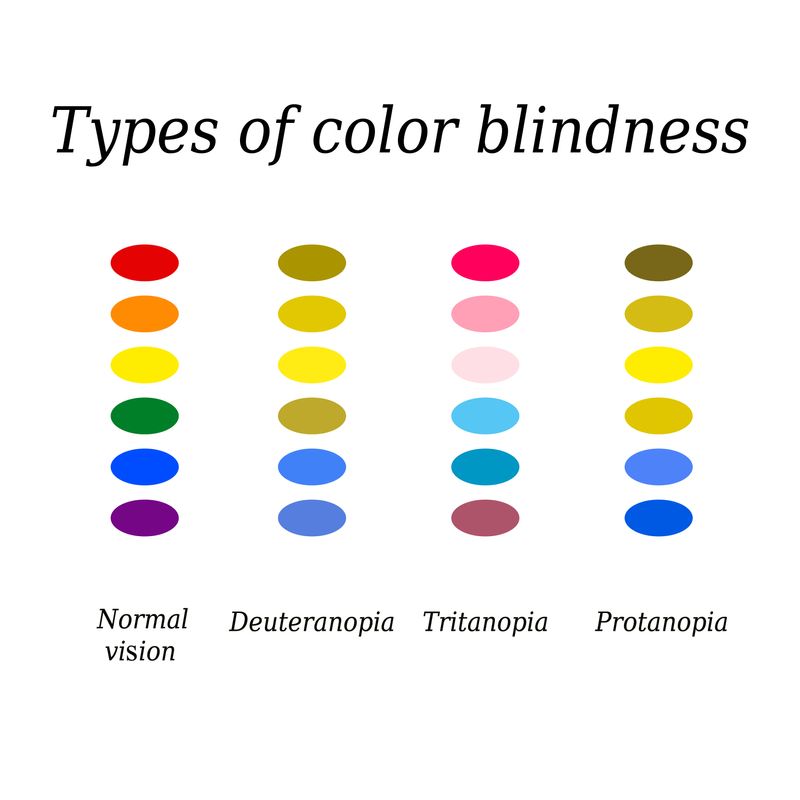
30 Jan Is My Child Color Blind?

When my son started having difficulty in school, I never gave color blindness a thought. He had difficulty figuring out dark blue from purple, but that seemed like an easy mistake to make. His PE teacher had pointed out his misbehavior in class, and it didn’t sound like him, but 24 kids together being physically active could spark those actions.
I didn’t put together the clues until the school nurse gave him an eye test in third grade. That’s when everything began to make sense.
Confirming Color Blindness
I was mystified. How could my son, JP, be color blind? Why hadn’t I noticed? Color blind kids compensate for what they can’t see. They develop methods that help them get by in most situations.
I found the Ishihara Color Vision Test online. I knew that it might not be accurate because colors vary on the screen, but I tried anyway. The test consists of circles with dots inside. In different colors, the dots make a shape or number. In every circle that tested red/green, JP saw nothing. No numbers.

I called my pediatrician, who calmly told me they would discuss it at his next visit. There was nothing to worry about. I understood that it was true medically, but so many issues in school suddenly made sense. I needed to address them.
I called my pediatrician, who calmly told me they would discuss it at his next visit. There was nothing to worry about. I understood that it was true medically, but so many issues in school suddenly made sense. I needed to address them.
The Signs I Had Missed
JP struggled most with identifying red, green, brown, and purple. I thought back to the physical education teacher’s last note: JP refused to run around the correct cones and was asked to sit out for the rest of class. When I contacted her, the teacher told me that he ran around other colors when he should have run around the purple cone.
JP’s classroom teacher said that he routinely colored with the wrong color crayons. Red, green, and brown had been interchangeable on his maps and coloring sheets.
When JP dressed himself, his clothes clashed, or he looked like a holiday tree — in red and green.
These mistakes occurred because to JP, the colors looked like this:
His protanopia made distinguishing many colors extremely difficult.
These are just a few of the signs I missed, but it was easy to explain each one away. Our pediatrician said that it was common to miss the signs of color blindness.
<h2>Color Blindness As He Grows</h2>
Once JP knew he was color blind, he was able to advocate for himself. When teachers used red, green, or purple markers on the smart board, he would raise his hand and ask if they could indicate things with shapes instead of colors.
It took time for him to figure out what looked different to him, but as he got older, he became more confident in asking if he was missing something.
But some things cannot be fixed, even with strategies and advocacy. JP wanted to be a doctor. He was very sad when he found out that color blindness would impair his ability to follow that dream.
<h2>Color Blind Glasses</h2>
Color blindness glasses are available online, but they are quite expensive! They come in indoor and outdoor collections, but both types look tinted. I bought a pair for JP.
The first time he wore them, he was shocked. He had never seen the colors in flowers, grass, trees, stop signs, and basically everything around him. He finally understood the difference between what he was seeing and what the rest of the family saw. He mostly wears them in school. At home, he prefers to go without.
<h2>If Your Child Is Color Blind</h2>
Communicate openly with your child so that they are aware that their vision is different. Let them know that some things will be challenging, but they should let adults know if they are struggling. If you have any questions about color blindness, please contact Meadow Montessori School. We are happy to help.


Sorry, the comment form is closed at this time.